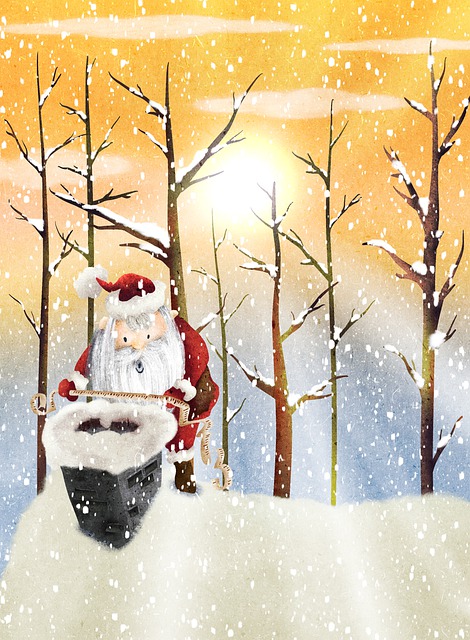Is Your Roof Santa Ready This Christmas?
Can your roof cope with the extra weight of Santa’s sleigh this Christmas? Will Santa pass you by because of slipped tiles, unsafe chimneys, mossy slates or overflowing gutters? Get your roof Santa (and winter) ready with the help of our latest blog!
1. Extra Weight or Loading on Roofs
On a more serious note, roof loading or the weight carried by roofs can become altered over time and inadequate roof structures can begin to show signs of stress. Ultimately if warning signs are ignored a roof may collapse.
Any alteration to a roof structure will require Building Regulation approval but unfortunately, we come across properties where alterations have been carried out without the necessary approvals. For example, sometimes roof timbers are removed to make a DIY loft room or structural timbers are cut to make more storage space or perhaps for a model railway. It is also worth remembering that storing heavy items or large amounts of belongings in a loft space can also cause a problem by overloading the supporting structures or by transferring weight through the building via alterative ‘load paths’.
In older buildings, original timbers can also come under considerable stress if they are re-covered in heavier materials than the original roof covering. A common example is when slates are replaced with concrete tiles which are much heavier. Timbers should be strengthened to cope with this extra loading and this usually involves additional propping beneath purlins and reinforcing timbers.
2. External Roof Maintenance
Putting up your external lights and Christmas decs is a great time to check your roof over for signs of wear and tear. We often talk in these blogs about the importance of building maintenance to prevent small defects from becoming big ones, but it is certainly worth mentioning again. Winter can really take its toll, particularly in high rainfall areas such as Wales where roofs have to work extra hard.
Clear gutters of leaves and debris which can cause water to overflow and can quickly result in wet rot in eaves timbers and penetrating dampness. Downpipes and gullies can also become quickly blocked by leaves washed down from the gutters. Also check for any loose connections between pipes and that water is being directed away from the walls of the building.
Check roofs for any slipped or missing tiles/slates and replace them as soon as possible. Also look carefully for any moss that might be growing on your roof. This is a common problem particularly under trees or on shady roofs. Moss growth can cause a problem if it becomes extensive as it can absorb and hold water against the roof covering and reduce the life expectancy of the tiles/slates. Moss can also block gutters. However, do not be tempted to clean moss away by jet washing, as this can force water up under the tiles and into the roof space. It can also damage fragile roof coverings. Moss can be cleaned using a proprietary biocide made specifically for the job and a wire brush or low-pressure washer.
3. Chimney Stacks and Flue Pipes
Probably the most common cause of water entering a property is from defective lead flashing around a chimney stack or flue pipe. The result is an unsightly damp patch on a chimney breast and wet rot in the loft. Before Santa arrives, check your chimney for defects from the ground, using a pair of binoculars if necessary, and call in a roofing specialist if required. Other common defects to watch out for are cracks to the render, crumbling mortar and even plants growing where they shouldn’t.
If you need advice about your roof this winter, require a survey or need help with any other property issue please contact Jones Battye on 01685 378894 (Aberdare) or 02920 625433 (Cardiff).
Wishing you a very Merry Christmas!






